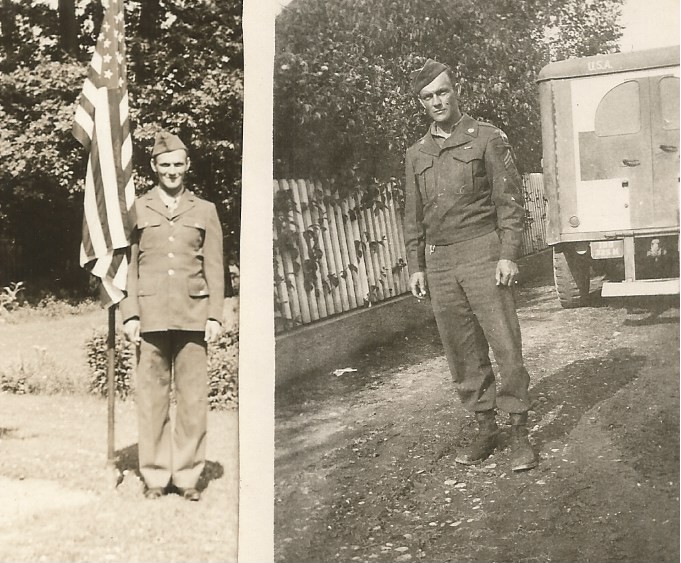 My ancestry is replete with American patriots, soldiers – veterans. From Anthony Morse Jr., a lieutenant in the militia at Newbury, Massachusetts, in the 1660s, to Samuel Morse, a soldier in the War of 1812; from Thomas Morse, a patriot in the American Revolution, to Colonius Morse, a private in the 19th Massachusetts Regiment during the Civil War,[1] I have ancestors who served in most major U.S. conflicts from the colonial period to the 1970s. I often wonder what life was like for my family in these times of turmoil. How did war affect the young men who served? How did it change them?
My ancestry is replete with American patriots, soldiers – veterans. From Anthony Morse Jr., a lieutenant in the militia at Newbury, Massachusetts, in the 1660s, to Samuel Morse, a soldier in the War of 1812; from Thomas Morse, a patriot in the American Revolution, to Colonius Morse, a private in the 19th Massachusetts Regiment during the Civil War,[1] I have ancestors who served in most major U.S. conflicts from the colonial period to the 1970s. I often wonder what life was like for my family in these times of turmoil. How did war affect the young men who served? How did it change them?
My father recently shared with me two very telling photos of one veteran ancestor, my grandfather Leon Norman Morse (1919–1976). These pictures illustrate his physical and perhaps emotional transformation.
The picture on the left is of Leon on 10 June 1942, eight days after he joined the 76th Infantry Division as a medic and ambulance driver/mechanic at Fort Bragg in North Carolina. While at Fort Bragg he was promoted to sergeant and helped train recruits for the newly formed 100th Division. In the fall of 1944, as a part of Company A, 325th Medical Battalion in the 100th Infantry Division of the 7th Army, Sergeant Morse crossed the Atlantic from New York to Marseilles, France, aboard the USAT George Washington with 7,000 other infantrymen.
Once in Europe, the 100th advanced slowly through German-occupied France. At the battle of Bitche in March 1945, the medical battalion worked tirelessly to aid the high number of wounded and dying. One morning, my grandfather awoke to discover a fellow soldier in the foxhole had been killed in the night by a sniper.[2] By VE-Day the 100th division had spent 163 days in combat, suffering 12,215 casualties (including 933 killed in action, 3,667 wounded in action, 589 missing in action, 1 prisoner of war, and 7,425 non-battle casualties).[3]
The second picture on the right was taken somewhere in Germany around this time in 1945.
My grandfather died before I was born. I never had the chance to ask him about his service during World War II, but these pictures speak volumes – a veritable “before and after” of a young man of 22 transformed in just three years. Beyond physical change, there is a more profound shift. The first photograph shows a boy with an unknowing, innocent smile; the second shows a man who has traded that unknowing smile for a knowing stare.
This Veteran’s Day, I urge you to reach out to a veteran and thank him or her for their service and their sacrifice. Consider how your veteran ancestors may have changed because of their military experiences. That transformation may be hiding in your family photos.
P.S. This post was a suggestion by my father, Leon Norman Morse II, a veteran of the Vietnam War. My father enlisted in the United States Air Force in 1964. After successfully completing a military language acquisition exam, he learned Chinese and Vietnamese at the Institute of Far Eastern Languages at Yale University. He was a Radio Intercept Operator in Da Nang in 1966 and later stationed in Pleiku in 1968–69. His service in the military earned him the Distinguished Flying Cross, Air Medal with bronze oak leaf cluster, and Air Force Commendation Medal.
I have never asked my father explicitly how his service changed him. Luckily, I still have that chance.
Notes
[1] He served at the Battles of Antietam, Fredericksburg, Chancellorsville, and Gettysburg.
[2] As relayed by Leon Norman Morse to Leon Norman Morse II ca. 1950.
[3] Wikipedia “100th Infantry Division (United States)” https://en.wikipedia.org/wiki/100th_Infantry_Division_(United_States)#World_War_II.
Share this:
About Ginevra Morse
As Director of Education and Online Programs, Ginevra manages online learning opportunities that showcase NEHGS resources. She previously worked in educational publishing, where she also created webinars, and as Publications Coordinator for NEHGS. Ginevra holds a B.A. in anthropology from McGill University in Montréal.View all posts by Ginevra Morse →